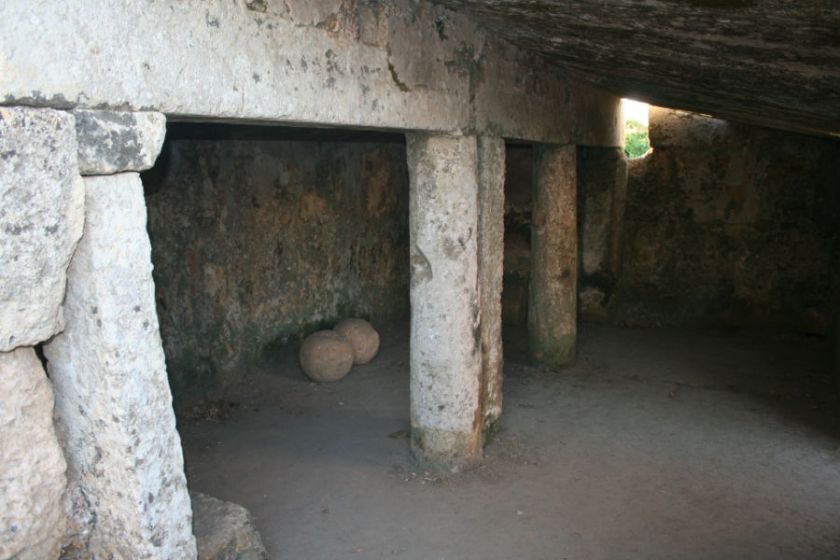Symbol of Patù is the monument of Centopietre.
The people believed that it was built by the giants, given the considerable size of about 100 blocks that compose it.
Legend tells that during the IX century came the French troops of the Carolingian "King Charles" in the rescue of Vereto, attacked by the Saracens that aimed to expand from Capo di Leuca inside of the Salento peninsula. The army arrived by sea to Gallipoli intercepted and enemies between Leuca and Vereto in the area called "Field King". On the eve of battle the french troops the knight "Germiniano or Giminiano" as ambassador to treat the peace with the result that these was imprisoned and murdered, unleashing the harsh reaction of Christians. The clash took place on 24 June 0877 and it was terrible. Christians won, received the body of the ambassador and they buried him in a honored tomb built with 100 tufaceous stone and combaciate without cement mortar. The legend also reports that in a second time the relics of Giminiano were translated in France, homeland of the hero.
Centopietre presents itself as a low and primitive rectangular hut built with 100 large ashlars (presumably coming from nearby and now destroyed Vereto). The roof has two inclined surfaces, and consists of 26 large slabs of stone arranged in a herringbone fashion. The shape of such construction especially in its lytic coverage to the canopy 2 sloping, reminiscent of some dolmen of Britain as well as that of some other primitive monuments which still exist today in the land of Otranto.
The building is oriented in the direction of length from north to south. Externally measure m.7,25 of length and m.6 about width and m.2,50 about height from the ground up to the chimney of the lytic canopy. Today it is accessed inside through two inputs, one on the east wall and the other along the south wall, on the north side you note a window.
Originally it was a closed building, inaccessible. In the XIII and XIV century along the south wall of the monument, initially sealed, was open to force an input. The inner part is divided longitudinally into two naves with an architrave lytic formed by 3 stone blocks aligned giving support to the ashlars that cover the building and are supported in turn by two walls shorter and three pillars and two columns.
Two of the three blocks that form the architrave, have a decoration with triglifi and metopes which corroborates the thesis that for the edification of the monument has been used material coming from the destroyed Vereto.
In 1950, the architect Prandi after an in-depth study supports the hypothesis that the monument has been built between the IX and X centuries A.D. as tomb inaccessible. It was designed by an architect Byzantine, as can be seen from the external measures of the monument that have as form the byzantine foot, using ashlars in the vicinity, presumably of Vereto destroyed with multiple sizes of the Roman foot.
- Piazza Marco Pedone, Patù (Lecce)
- Archaeological sites
- Monument /attraction
Sleep, eat, buy...
7.06 Kilometers from Patù
9.22 Kilometers from Patù
12.81 Kilometers from Patù
4813.96 Kilometers from Patù
4840.79 Kilometers from Patù
4836.59 Kilometers from Patù
4813.09 Kilometers from Patù
4840.56 Kilometers from Patù
4838.62 Kilometers from Patù





